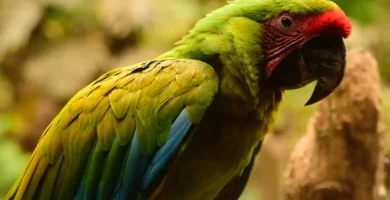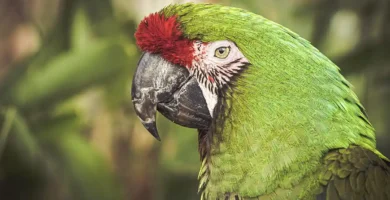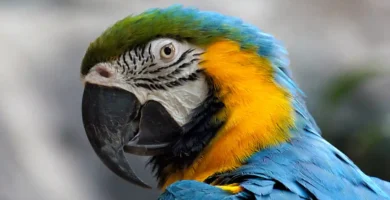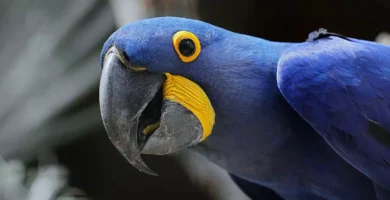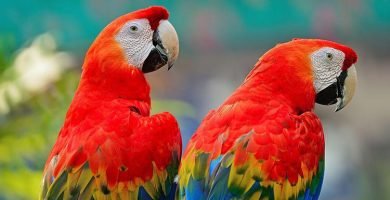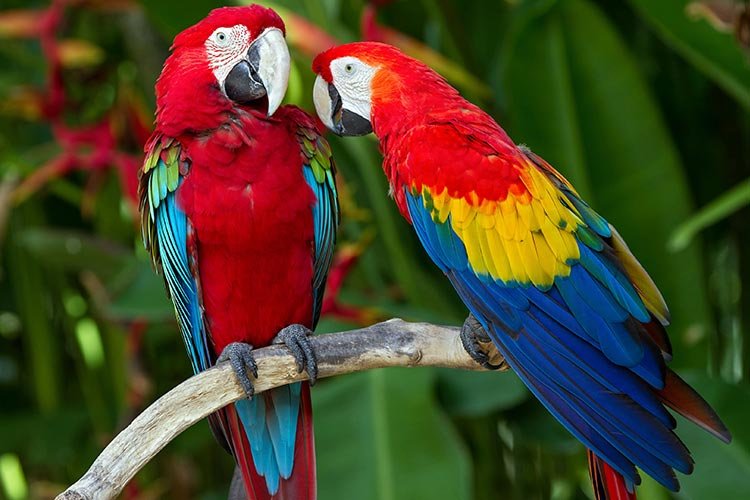
In the vibrant world of the parrot family, macaws hold a special place with their enchanting charm and colorful feathers. They are the largest of all parrot species and are famous for their impressive size, striking colors, and long tail feathers. Macaws are native to the tropical regions of Central and South America, adding vibrant hues to the rainforests with their bold plumage. Among the numerous macaw species, each boasts its unique characteristics, making them a fascinating study for any bird lover.
Unique Features
What sets macaws apart? Their stunning color variations, the powerful and curved beaks, and their intelligence are a few to mention. The strong beak is capable of breaking hard nuts and seeds that form a vital part of their diet. Their long, pointed tails often extend beyond their body length, contributing to their majestic flight and distinct appearance. Another unique feature is the bare patch of skin on their face, where tiny feathers form unique patterns, almost like fingerprints!
Types of macaws
Key Features and Differences
There are about 19 macaw species, ranging from the large and flamboyant Hyacinth Macaws to the more modestly sized Hahn’s Macaw. Some species, like the Blue and Gold Macaw, are known for their friendly nature and high vocal abilities. In contrast, others like Military Macaws are recognized for their resilience and adaptability. Each species has its distinct feather pattern and color, making them a remarkable sight for anyone, not just bird lovers!
Color Variations and Feather Patterns
Macaws are a rainbow in the parrot world, boasting a wide range of colors from blues, greens, reds, and yellows. The feather pattern varies with species. For instance, the Blue and Gold Macaw (Ara ararauna) is admired for its stunning blue upperparts and golden underparts, while the Green Winged Macaw (Ara chloropterus) sports green feathers on its wings that contrast with its red body. The Scarlet Macaw (Ara macao) is a spectacle of red, yellow, and blue, and the Military Macaw (Ara militaris) presents a more subdued green plumage.
What is the difference between a macaw and a parrot?
All macaws are parrots, but not all parrots are macaws. Macaws belong to the parrot family, known for their curved beaks and zygodactyl feet (two toes facing forward and two facing backward). Macaws are differentiated from other parrots by their size (they are among the largest in the parrot family), long tail feathers, and often vibrant coloration.
Hyacinth Macaw
The Hyacinth Macaw (Anodorhynchus hyacinthinus), the largest of the macaw species, is a sight to behold with its cobalt-blue plumage and bold yellow patches around its eyes and beak. Native to the regions of Brazil, Paraguay, and Bolivia, these birds primarily feed on palm nuts from native palms. Their strong beaks, the most powerful among parrots, can crack even the toughest nuts!
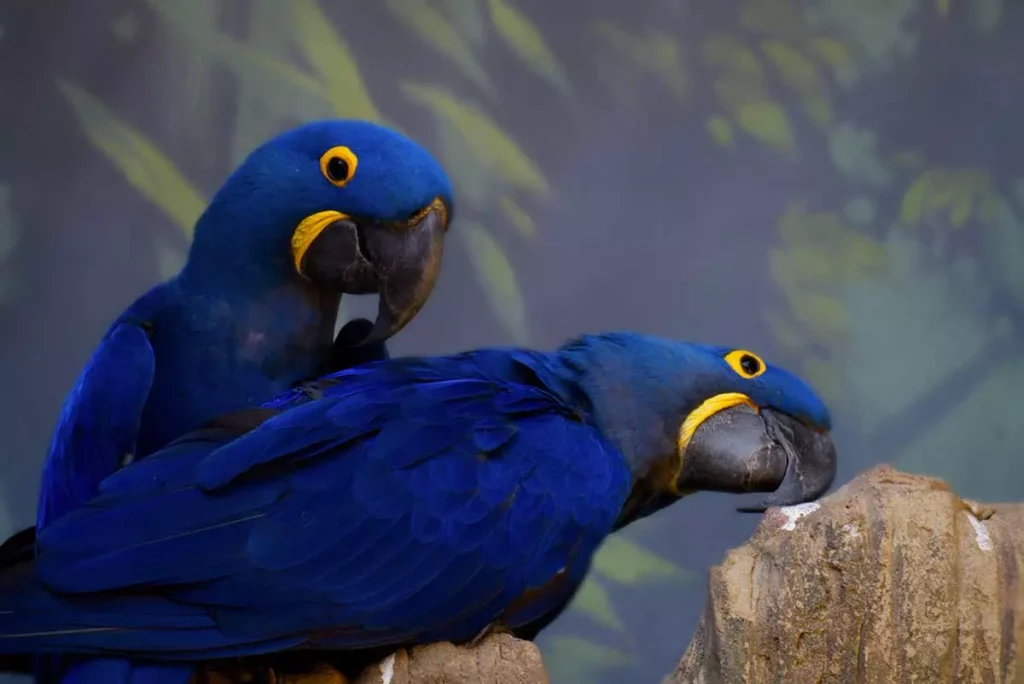
Blue and Gold Macaw
The Blue and Gold Macaw (Ara ararauna), affectionately known to bird enthusiasts as the “Blue and Yellow Macaw,” is one of the most famous macaw species. Adorned with bright blue wings and a gold underbelly, it’s a favorite in both the wild and as pets due to their sociable nature and long lifespan. They are also known for their high intelligence and impressive mimicry skills, often learning to replicate human speech.
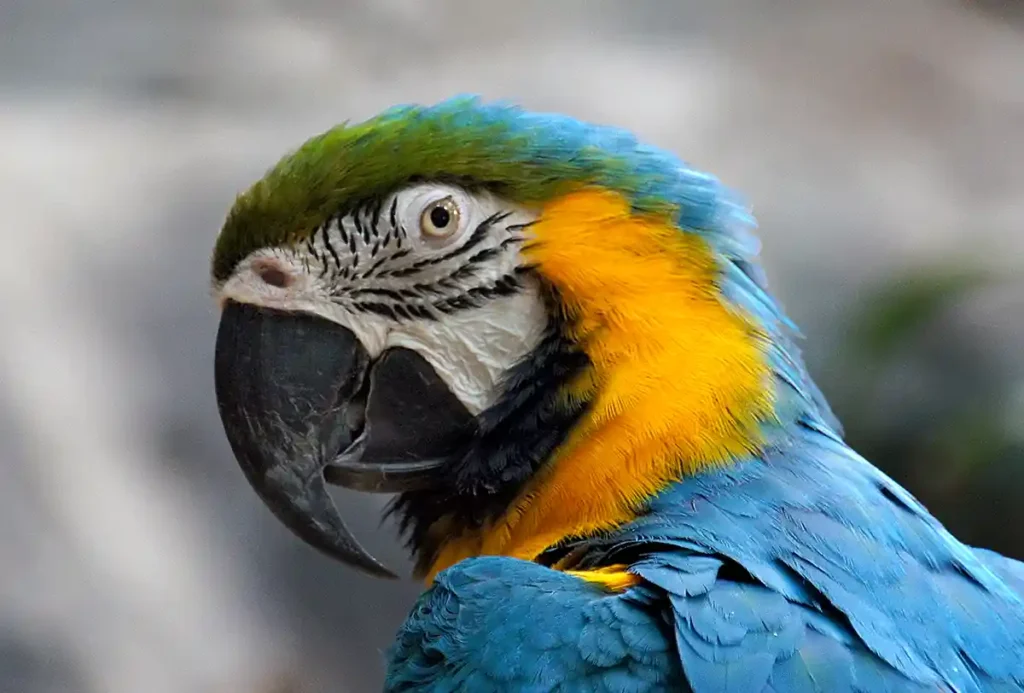
Green Winged Macaw
The Green Winged Macaw or Red and Green Macaw (Ara chloropterus), often mistaken for the Scarlet Macaw due to its predominantly red plumage, is another magnificent member of the macaw family. They have a distinctive green band on their wings and a blue lower back and rump. These birds are highly sociable and display a friendly disposition, making them popular pets.

Scarlet Macaw
A feast for the eyes, Scarlet Macaws (Ara macao) is known for its brilliant red, yellow, and blue plumage. This colorful bird is native to humid evergreen forests in the American tropics, spanning from South America to Central America. Scarlet Macaws are intelligent and are known for their loud calls and screeches, which echo through the canopies of the rainforests they call home.

Military Macaw
Military Macaws (Ara militaris) is a medium-sized macaw with a more uniform green plumage, a red forehead, and a blue nape. Despite their less flamboyant coloring, they are equally fascinating, known for their social behavior and loud vocalizations.
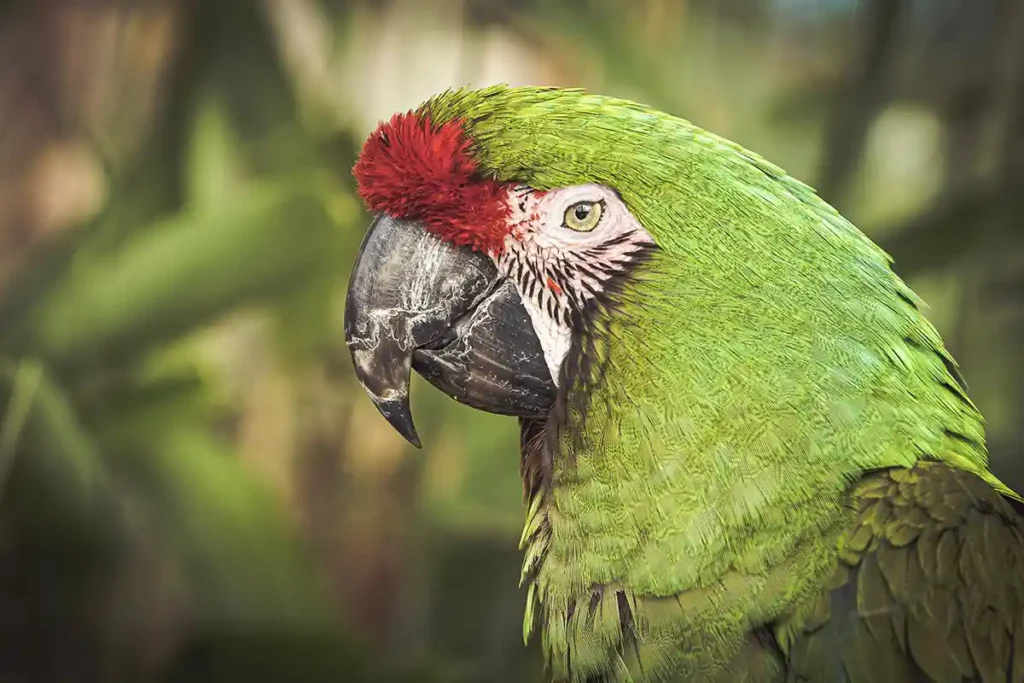
Great Green Macaw
The Great Green Macaw (Ara ambiguus), is an alluring parrot species known for its vibrant green plumage. Predominantly found in Central and South America’s rainforests, it’s characterized by a striking red forehead, blue lower back, and a sizable hooked beak. A part of the larger macaw species, it stands out with its playful nature, intelligence, and an array of squawks and screams that make up its unique voice.
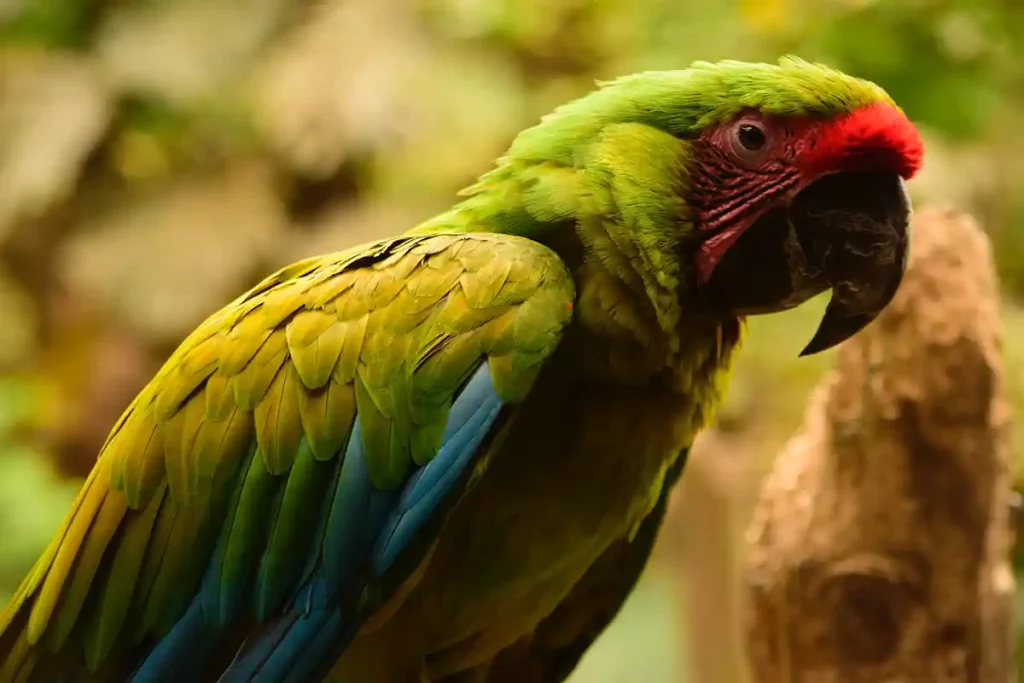
Blue-throated Macaw
The Blue-throated Macaw (Ara glaucogularis) is a breathtaking bird species found in a small area of north-central Bolivia, known as Los Llanos de Moxos. This macaw is recognized by its vibrant blue throat patch, a stark contrast to its predominantly yellow body. With a strong, curved beak and expressive eyes, this macaw species captivates bird lovers with its beauty and its vibrant personality. Endangered in the wild, it’s a symbol of the urgent conservation efforts needed to preserve these incredible birds.

Macaw Habitats and Ecology
Native Regions and Habitat Types
Macaws are native to the lush rainforests of Central and South America, where they reside in woodland and savannah-like habitats. They are often found along river banks and are known to frequent clay licks for mineral consumption. These birds are also known to adapt to various woodland-type areas, depending on the availability of food sources and nesting sites.
Are macaws native to Mexico?
Yes, some species of macaws are native to Mexico, including the Military Macaw (Ara militaris) and the Scarlet Macaw (Ara macao). However, macaws are found in various parts of Central and South America, extending from Mexico to northern Argentina.
Role in the Ecosystem
As natural seed dispersers, macaws play a significant role in the health of our planet’s ecosystem. They consume a variety of fruits, nuts, and seeds, and in the process, pass the seeds through their digestive system, promoting new plant growth wherever they go. Sadly, many of these majestic creatures, such as the glaucous macaw, are under threat due to habitat destruction and the illegal pet trade.

Macaw Behavior and Socialization
Interaction with other birds
Macaws are social creatures, often seen in pairs or in large flocks. They engage in mutual grooming and are known to form lifelong pair bonds. This sociability extends beyond their species, as macaws in captivity can often form bonds with other bird species and even their human caregivers.
Communication
Macaws communicate using a variety of vocalizations, from gentle warbles when content to loud screeches when alarmed or excited. They’re also known for their impressive mimicry skills, with some individuals even learning to mimic human speech.
Can macaws talk?
Absolutely! Macaws are known for their impressive ability to mimic human speech. They may not understand the words they are saying, but they are excellent at imitation. The extent to which a macaw learns to talk can depend on the individual bird, its age, and the amount of time you spend training it.
Do macaws talk a lot?
Yes, macaws are known for being vocal. They can mimic human speech, produce a variety of sounds, and even sing melodies. However, they also make loud, natural calls that can be disruptive, especially in the early morning and evening. It’s essential to remember that their vocalizations are a part of their natural behavior and should be expected if you’re considering owning a macaw.
Do macaws get aggressive?
Like all pets, these birds can show signs of aggression when they are scared, stressed, or territorial. However, with proper handling, socialization, and care, aggression can often be minimized. It’s crucial to understand their behavior and provide them with a nurturing and comfortable environment.
Keeping Macaws as Pets
Bonding with Owners
Macaws bond deeply with their owners, displaying behaviors akin to those of a loyal dog. They crave interaction and socialization, often developing strong attachments to their human caregivers. This bond is not one-sided, as many macaw owners testify to the profound companionship and joy these birds bring.
Do macaws bond with one person?
Yes, macaws often form strong bonds with their owners. They are known to be particularly fond of the primary caregiver in the household, though they can also develop relationships with other family members. This bond is fostered through regular interaction and gentle handling.
Challenges and rewards for bird owners
Owning a macaw is a long-term commitment, with many species living for 50 years or more. They need constant mental stimulation and a lot of attention to prevent behavioral problems. However, the rewards are immense. Their intelligence, affectionate nature, and stunning beauty provide endless delight and fascination for their owners.
Tips for proper Macaw care
Providing a suitable living environment, a balanced diet, and ample interaction are key to keeping a macaw healthy and happy. Their diet should consist of a variety of fruits, vegetables, and a base of high-quality pellets. They also need regular veterinary check-ups to monitor their health.
Which macaw is best as a pet?
Different macaw species have different temperaments and needs, so the best macaw as a pet depends on your lifestyle and what you’re looking for in a pet. Blue and Gold Macaws, for example, are popular for their friendly nature and striking coloration. Green Winged Macaws are also popular due to their playful and affectionate demeanor. It’s best to research different species to find the one that matches your lifestyle and expectations.
Species like the Hyacinth macaw are less common as a pet.
Do macaws like being touched?
Macaws, once they’ve formed a bond with their owners, often enjoy being petted, particularly on their head and neck areas. However, every bird is different, and it’s essential to pay attention to their body language to understand their comfort level. Some may not enjoy physical contact as much as others, and their boundaries should always be respected.
Ethical considerations and responsible ownership
Owning a macaw comes with ethical considerations. It’s essential to ensure that your bird has been bred in captivity, rather than captured from the wild. Before becoming a macaw owner, one should be fully aware of the demands and responsibilities it entails.
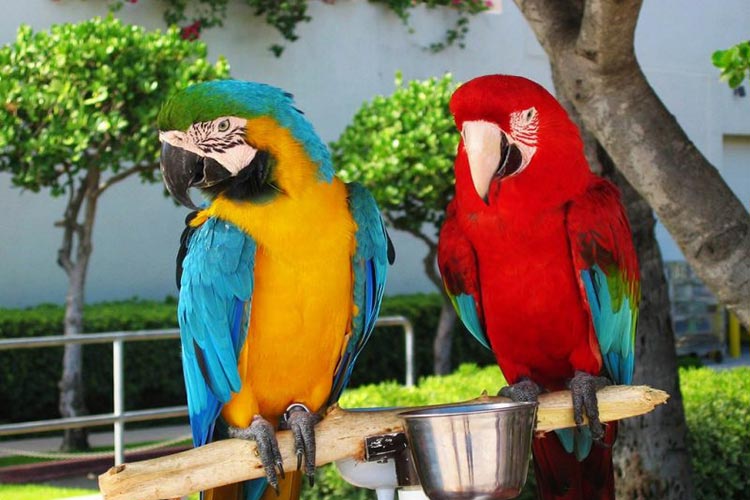
The life and family life of Macaws
Mating and Breeding Behavior
Macaws form lifelong pair bonds, with pairs often seen flying together, wings almost touching. During breeding season, females lay one to four eggs which they incubate for about 28 days. It’s a unique sight to see both parents sharing the responsibilities of rearing their chicks.
Raising Macaw Chicks
Macaw chicks, like most parrots, are born altricial, meaning they are completely helpless and dependent on their parents for survival. Both parents take turns feeding the chicks with regurgitated food. Within a few weeks, the chicks develop feathers and start to leave the nest, although they are birds that remain dependent on their parents for several months after fledging.
Understanding the Lifespan of Macaws
In the world of avian pets, macaws are true standouts, not just for their vibrant colors and impressive size, but also for their extraordinary lifespan. On average, macaws can live between 30 to 50 years, although this varies among different species.
What is the longest lifespan of a macaw?
It is very active and quite noisy, which likes to play a lot. It is also a very demanding pet when it comes to receiving love. When it comes to training them, it is not usually complicated, as these birds are animals that can quickly get attached to humans and do not dislike learning some tricks.
Astonishingly, some macaws, especially larger species such as the Blue and Gold Macaw or the Green Winged Macaw, have been known to live up to 80 years or more in captivity with proper care. Their longevity is one of the reasons why owning a macaw is considered a lifelong commitment.
This longevity is mainly due to their slower metabolic rate, which contributes to a slower aging process compared to smaller birds. However, it’s crucial to bear in mind that a macaw’s lifespan is heavily influenced by factors such as diet, exercise, mental stimulation, and overall healthcare.
A balanced diet, rich in fruits, vegetables, nuts, and seeds, is fundamental to the longevity of these birds. Regular veterinary check-ups are also necessary to prevent and treat common health issues that could affect their lifespan. Regular exercise, both physical and mental, is also vital for a macaw’s health and well-being.
Stress, obesity, and malnutrition are significant factors that could reduce a macaw’s lifespan. In the wild, these birds face threats from predators, habitat destruction, and the pet trade, which can drastically reduce their lifespan.
Considering their long lifespan, prospective macaw owners should be aware that adopting a macaw is a lifelong commitment. You’re not just bringing a pet into your home – you’re welcoming a family member who may be with you for decades to come. It’s a fulfilling journey, filled with joy, companionship, and the wonder of cohabiting with one of nature’s most colorful creatures.
Macaw Care and Feeding

Diet Requirements
Macaws require a nutritious and varied diet. In the wild, their diet includes a variety of fruits, nuts, seeds, and occasionally insects and snails. As pets, these birds should be given a balanced diet of fresh fruits and vegetables, supplemented with a high-quality pellet mix. Foods like avocados, chocolate, and caffeine are harmful to them and should be strictly avoided.
Cage and Environment Setup
Macaws are active birds and require a lot of space. Cages should be large enough for them to stretch their wings and have multiple perches. Additionally, they need plenty of out-of-cage time for exercise and social interaction. Enrichment toys can help keep them mentally stimulated.
Health Concerns and Common Issues
Macaws are generally robust birds but are prone to some health issues such as beak malocclusion, feather plucking, and respiratory disorders. Regular veterinary checkups can help spot and treat these problems early.
Saving Macaws: Conservation Efforts and Challenges
Threats to Macaw Populations
Unfortunately, many macaw species are facing severe threats due to habitat destruction and the illegal pet trade. Land clearing for agriculture and logging are reducing their habitats, and many birds are captured to supply the demand for exotic pets.
National Geographic and UICN’s Role in Conservation
Organizations like National Geographic and the International Union for Conservation of Nature (UICN) are at the forefront of efforts to conserve these beautiful birds. They focus on protecting natural habitats and educating the public about the importance of not purchasing illegally sourced birds.
Importance in Pet Trade
Although the pet trade has contributed to the decline of wild macaw populations, responsibly bred pet macaws can contribute to their species’ survival. Owners of these birds often become passionate advocates for their wild counterparts, supporting conservation efforts financially and through raising awareness.
Conclusion
Macaws are more than just beautiful birds; they’re intelligent, social, and vital to their ecosystems. It’s our responsibility to ensure these magnificent creatures continue to soar in the wild. By supporting responsible pet ownership and conservation efforts, we can help protect macaws for generations to come. Let’s join hands to appreciate and protect these colorful ambassadors of the tropical rainforests. After all, a world without macaws would be like a sky without a rainbow.
So, are you ready to take a step towards protecting these feathered gems? We invite you to explore more about macaws and their different parrot species, join local conservation efforts, and become a responsible bird lover. Every effort counts in making a difference. Let’s make it happen, together!

